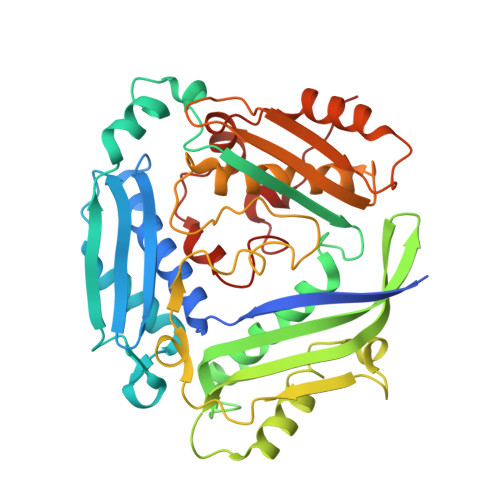Combining structural and coevolution information to unveil allosteric sites.
La Sala, G., Pfleger, C., Kack, H., Wissler, L., Nevin, P., Bohm, K., Janet, J.P., Schimpl, M., Stubbs, C.J., De Vivo, M., Tyrchan, C., Hogner, A., Gohlke, H., Frolov, A.I.(2023) Chem Sci 14: 7057-7067
- PubMed: 37389247
- DOI: https://doi.org/10.1039/d2sc06272k
- Primary Citation of Related Structures:
8OOG - PubMed Abstract:
Understanding allosteric regulation in biomolecules is of great interest to pharmaceutical research and computational methods emerged during the last decades to characterize allosteric coupling. However, the prediction of allosteric sites in a protein structure remains a challenging task. Here, we integrate local binding site information, coevolutionary information, and information on dynamic allostery into a structure-based three-parameter model to identify potentially hidden allosteric sites in ensembles of protein structures with orthosteric ligands. When tested on five allosteric proteins (LFA-1, p38-α, GR, MAT2A, and BCKDK), the model successfully ranked all known allosteric pockets in the top three positions. Finally, we identified a novel druggable site in MAT2A confirmed by X-ray crystallography and SPR and a hitherto unknown druggable allosteric site in BCKDK validated by biochemical and X-ray crystallography analyses. Our model can be applied in drug discovery to identify allosteric pockets.
- Medicinal Chemistry, Research and Early Development, Cardiovascular, Renal and Metabolism (CVRM), BioPharmaceuticals R&D, AstraZeneca Gothenburg Sweden giuseppina.lasala@astrazeneca.com andrey.frolov@astrazeneca.com.
Organizational Affiliation:



















